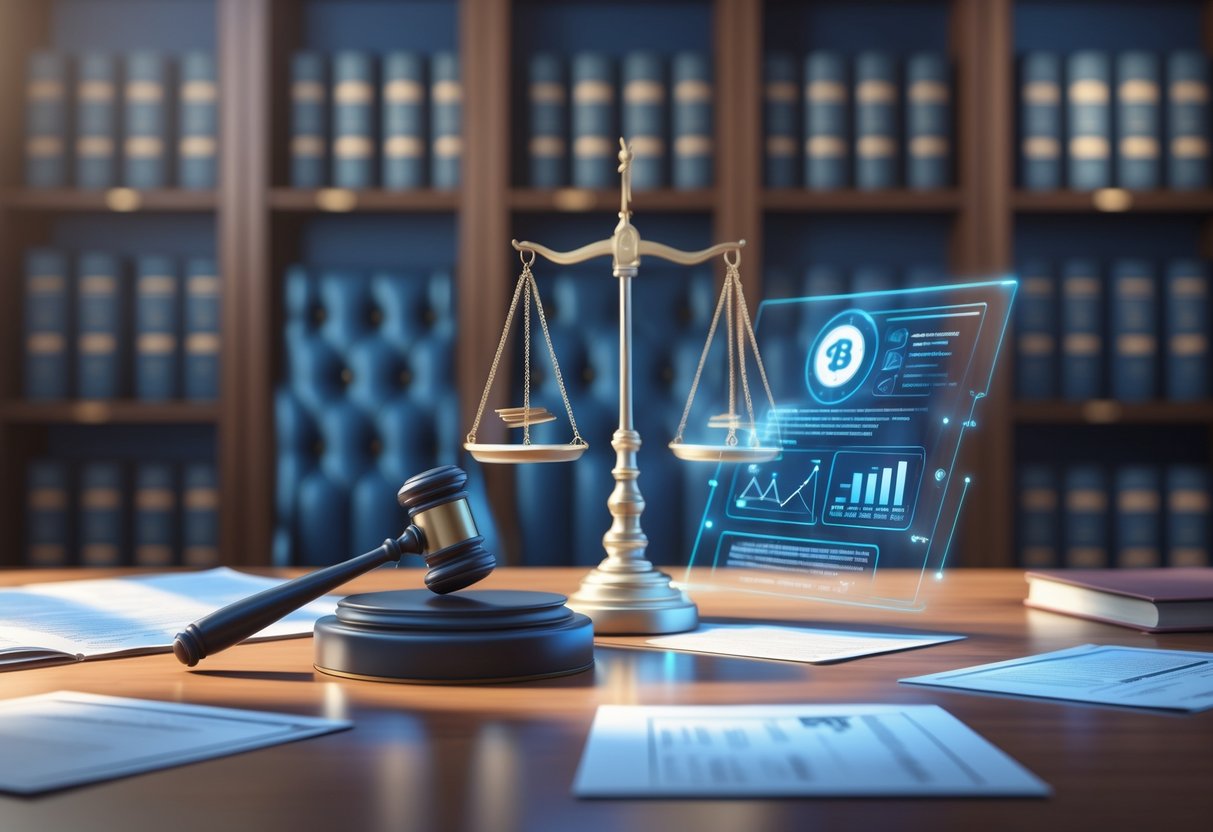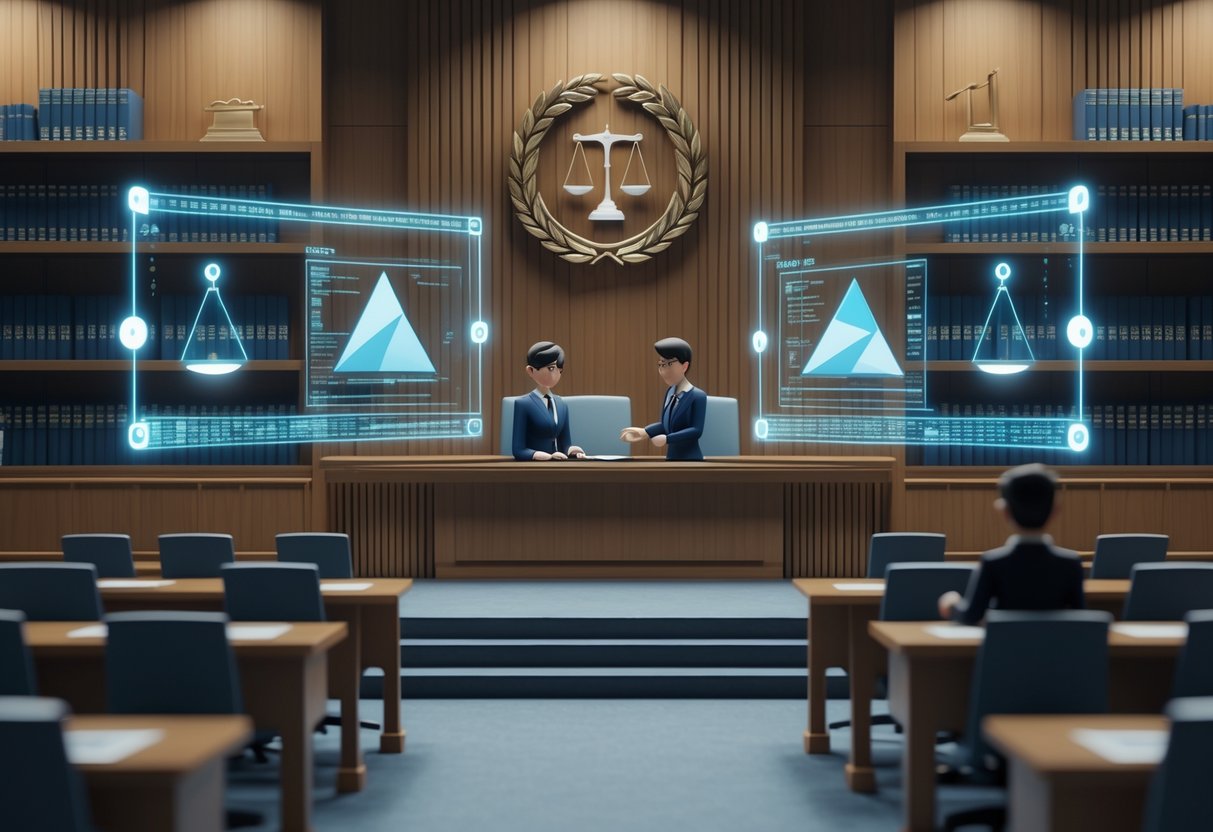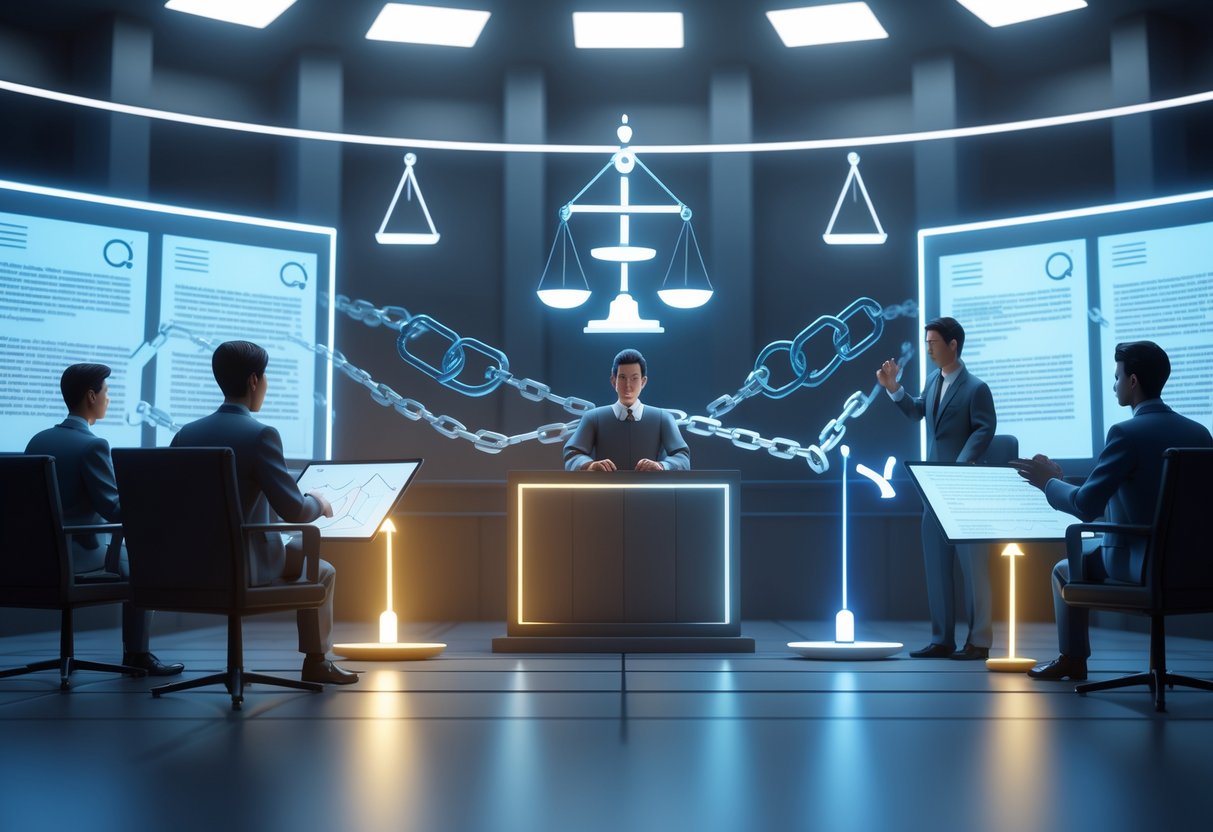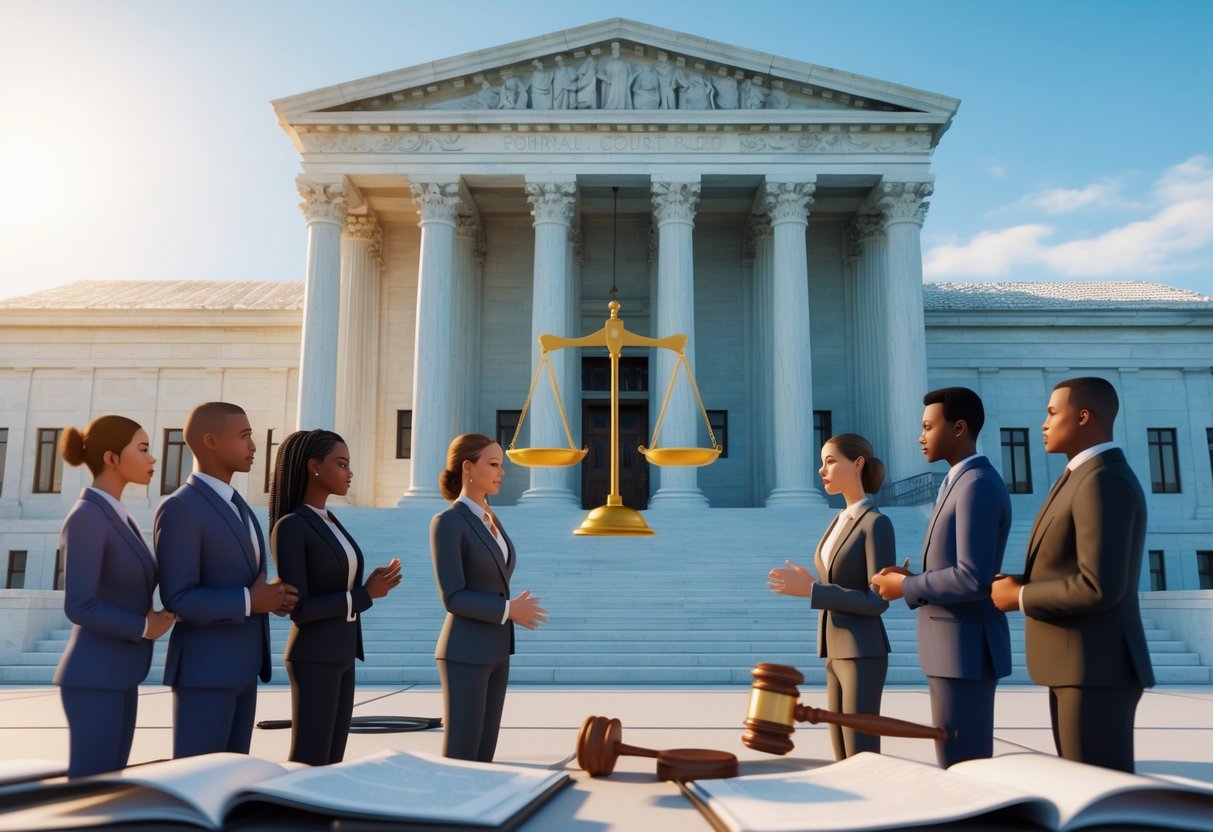Competitive Ruling Appeals: Key Processes, Cases, and Outcomes
Updated On: October 23, 2025 by Aaron Connolly
Understanding Competitive Ruling Appeals
Competitive ruling appeals give parties a way to challenge decisions from competition authorities if they think legal errors happened or unfair market practices slipped through. Usually, businesses, regulators, or consumer groups seek a review of antitrust decisions, merger approvals, or rulings on market conduct.
Definition of Competitive Ruling Appeals
A competitive ruling appeal happens when someone contests a competition authority’s decision through a specialised judicial body. These appeals target legal errors, not a full re-examination of facts.
This process acts as a check on regulatory power. It makes sure competition authorities stick to proper legal procedures when deciding on market behaviour, mergers, or antitrust violations.
Appeals cover a few main areas:
- Merger approvals or rejections
- Market abuse findings
- Price control determinations
- Competition law penalties
To win an appeal, you generally have to show legal or procedural mistakes in the original decision. Just disagreeing with the outcome isn’t enough—there needs to be a clear error in how competition law was applied.
Appellants carry the burden of proof. They need to show exactly why the ruling was wrong.
Scope and Application in the UK and US
United Kingdom
The Competition Appeal Tribunal (CAT) handles these appeals in the UK. This body brings together law, economics, business, and accountancy expertise.
The CAT reviews decisions from:
- The Competition and Markets Authority (CMA)
- Ofcom (communications)
- Ofgem (energy markets)
- Other sector regulators
Under the Competition Act 2003, appeals about price controls often get referred to the Competition Commission. This adds an extra layer for complex economic cases.
United States
In the US, competitive ruling appeals follow federal court procedures. Appeals usually go through:
- District courts first
- Then circuit courts of appeal
- In rare cases, the Supreme Court
Most often, the Federal Trade Commission (FTC) or DOJ antitrust divisions make the decisions being challenged. The US process feels more adversarial compared to the UK’s specialist tribunal approach.
Typical Parties Involved
Primary Appellants
Companies facing fines or other penalties lead the pack as appellants. They challenge rulings that block mergers, impose fines, or restrict market behaviour.
Regulatory Bodies
Competition authorities defend their decisions during appeals. They have to explain their legal reasoning and factual findings to the appeal court.
Third-Party Interveners
Consumer groups, industry associations, and rivals sometimes join as interested parties. They add more context on how the ruling might affect competition.
Legal Representatives
Specialist competition law barristers and solicitors represent everyone involved. The UK’s Competition Appeal Tribunal even runs a pro bono scheme for those who can’t afford legal help.
Expert Witnesses
Economists and industry experts provide technical evidence about market behaviour, pricing, and competitive effects. In complicated appeals, their input can tip the scales.
Legal Basis for Challenging Competitive Rulings

Federal employees have specific legal rights to challenge competitive rulings, thanks to statutory frameworks and procedural safeguards. These challenges usually focus on whether agencies followed merit-based selection requirements and proper due process protections.
Statutory Authority and Judicial Review
The Merit Systems Protection Board (MSPB) serves as the main forum for federal employees to challenge competitive rulings. Most successful appeals point to violations of Title 5 of the Code of Federal Regulations.
Key statutory provisions:
- 5 CFR Part 351 (reduction in force procedures)
- 5 USC Chapter 43 (performance-based actions)
- 5 USC Chapter 75 (adverse actions)
The Federal Circuit Court of Appeals reviews MSPB decisions using a substantial evidence standard. Appellants must show the agency’s decision didn’t have reasonable support in the record.
Courts insist agencies follow their own procedures exactly. Even small mistakes can lead to reversal if they significantly harm an employee’s rights.
Legal challenges often succeed when agencies skip required steps or misapply merit principles.
Relevant Legal Standards
Three main legal standards control these challenges. The “harmful procedural error” standard means you have to show the agency’s mistake probably changed the outcome.
Harmful error test:
- The agency made a procedural mistake
- The mistake was significant, not trivial
- The outcome would probably have changed
Performance rating disputes use the “clearly erroneous” standard. Appellants must show the rating wasn’t backed by substantial evidence or relied on wrong facts.
Competitive area challenges use the “arbitrary and capricious” standard. Agencies can’t group employees in ways that unfairly cut their retention rights.
When more than one standard gets violated, appeals get stronger. For example, rating errors plus bad competitive area definitions make a solid case.
Procedural Due Process Issues
Due process violations pop up when agencies don’t provide proper notice or fair procedures. RIF notices with wrong dates, missing appeal rights, or incomplete info show up a lot.
Common violations:
- Not enough notice
- Wrong effective dates
- Missing performance records
- Bad competitive area definitions
The “fundamental fairness” principle says agencies must give employees a real chance to respond. That means access to documents and enough time to prepare.
Courts stress that procedural rights keep the merit system honest. Even if an agency gets the right result, bad procedures can ruin their case.
You have to file appeals within 30 days of the effective date or when you get the notice, whichever comes later. Miss this deadline and you’re usually out of luck, no matter how strong your argument.
Appeals Process Overview
The appeals process for competitive rulings runs on tight deadlines and set steps. Most esports organisations want appeals filed within 3-7 days, and the paperwork and fees differ by tournament organiser.
Filing Deadlines and Requirements
Time limits are strict in competitive gaming appeals. Major tournaments usually give you 72 hours after the ruling. Some leagues stretch it to 5-7 days for tougher cases.
You’ll need a few things to file:
- Original match footage or screenshots
- Written statement explaining why the ruling was wrong
- Supporting evidence like chat logs or referee messages
- Appeal fee (£25-£100, refunded if you win)
Send your filing to the tournament’s appeals committee—not the original ref. Most organisers use online portals for uploads and payments.
Heads up: Miss the deadline, even by an hour, and your appeal is probably dead on arrival. Set reminders and don’t cut it close.
Appeals Timetable and Stages
Appeals typically go through three stages over 7-14 days.
Stage 1: Initial Review (2-3 days)
The panel checks if your submission is complete and on time. They’ll reject anything late or missing key info.
Stage 2: Evidence Assessment (3-7 days)
Panel members look at match footage, reports, and your evidence. Sometimes they reach out for more info or talk to witnesses.
Stage 3: Final Decision (2-4 days)
The committee decides—uphold, overturn, or tweak the original ruling. They’ll give written reasons and adjust penalties if needed.
Pro tip: Track your appeal through the organiser’s portal. Emailing for updates rarely gets you far.
Selection of the Appellate Forum
Different competitions use different appeals systems, and it really matters which one you’re dealing with.
Tournament-Specific Panels
Most events (ESL, FACEIT, Riot Games) handle appeals in-house. These panels know the game well but often stick to consistent rulings.
Third-Party Arbitration
Some leagues bring in independent arbitrators for big cases, like cheating. It costs more (£200-£500), but you get a neutral review.
Regional Gaming Authorities
UK tournaments might use UKESF appeals, while EU events follow their own standards. Always check which rules apply before you file.
Severity matters. Minor penalties stay with tournament panels, but big sanctions—bans, disqualifications—often go to higher authorities automatically.
Grounds for Appeal in Competitive Rulings

Appeals give businesses and consumers a way to check regulatory power when decisions hurt them. The best appeals focus on procedural failures, wrong legal interpretation, or bad evidence analysis.
Procedural Errors and Omissions
Procedural errors drive most successful appeals. These happen when authorities skip proper legal steps during investigations.
Common mistakes:
- Missed evidence deadlines
- Not enough consultation time
- No proper hearing opportunities
- Wrong notification procedures
These problems show up most in merger reviews and market investigations. Authorities have to hit strict timelines and hold proper consultations.
When businesses face rushed investigations, they lose chances to present their side. Courts have made it clear—procedural fairness matters as much as the outcome.
Documentation gaps are another big problem. If regulators can’t prove they followed the rules, courts often overturn their decisions.
Misapplication of Competition Law
Appeals succeed when authorities misinterpret or misuse the law. Sometimes, regulators stretch legal definitions too far.
Key areas:
- Market dominance thresholds—setting power levels too low
- Consumer harm standards—using the wrong measures
- Efficiency defences—rejecting valid business reasons
Competition law needs precise legal tests. If authorities use the wrong legal framework, their analysis falls apart.
This happens a lot in tech sector cases. Regulators often struggle to apply old competition concepts to digital platforms.
Ignoring precedent also opens the door for appeals. When authorities sidestep established legal principles, appellate judges usually step in.
Interpretation of Evidence
Authorities sometimes get the facts wrong, and that can sink their decisions.
Common evidence issues:
- Using outdated market data
- Misreading economic models
- Ignoring expert testimony
- Bad statistical analysis
Competition cases rely on complex economic evidence about market behaviour and consumer impact. Even small errors can flip the outcome.
Evidence disputes show up most in merger cases. Authorities might define markets too narrowly or use the wrong timeframes.
Expert witness disagreements create more appeal chances. When regulatory and business experts don’t see eye to eye, courts have to pick which view fits market reality better.
Landmark Cases and Judicial Precedents
Major court decisions in appeals shape the rules for future cases. The Supreme Court leads the way, and specific cases like NEA set the tone for competitive settings.
Supreme Court Decisions Impacting Appeals
The Supreme Court sets the standard for how lower courts handle appeals. Their rulings become binding precedent for everyone else.
Marbury v. Madison (1803) gave courts the power to overturn unconstitutional laws. That case changed the game by letting judges question government actions.
Stare decisis—“let the decision stand”—means courts try to stay consistent. This helps people know what to expect when they appeal.
Supreme Court powers in appeals:
- Review lower court decisions
- Set binding precedent for all federal courts
- Interpret constitutional rights
- Overturn unconstitutional laws
Federal trial courts have to follow Circuit Courts of Appeals. Higher court decisions control the lower ones.
The Supreme Court only hears about 70-80 cases a year. They pick ones that impact the whole legal system or settle conflicts between courts.
Notable Appellate Rulings
Appellate courts see thousands of cases, and some of these set important precedents. These rulings touch on legal issues that shape how future appeals play out.
Civil rights appeals shifted segregation laws and changed how discrimination gets handled. Courts used these cases to widen protections for more people.
Free speech cases put boundaries on government censorship. Appeals courts decide how far protected speech goes before it crosses into harmful territory.
Criminal appeals shape rules for:
- Evidence collection
- Police procedures
- Defendant rights
- Sentencing guidelines
Most appellate rulings don’t make it to the Supreme Court, but they still set binding precedent. Judges in the same circuit or region rely on these decisions in similar cases.
Business and regulatory appeals influence how companies operate. Courts review government rules and decide if agencies actually have the authority they claim.
The appeals process gives higher courts a chance to fix trial judge mistakes. This keeps the law applied more consistently from place to place.
Influence of the NEA Case
The National Esports Association case really shows how legal precedents work in competitive gaming disputes. This ruling now affects how esports organizations write player contracts and run tournaments.
Contract enforcement got a lot clearer after the NEA decision. The court laid out what makes esports agreements legally binding.
Player rights also got a boost from this case. The ruling tackled things like:
- How to split tournament prizes
- How contracts can be ended
- Ways to resolve disputes
- Standards for fair play
Regulatory authority issues popped up in the NEA case too. Courts had to figure out which laws apply to esports and who actually oversees these disputes.
This precedent now guides future esports legal cases. Lawyers often point to this ruling when they handle disputes between players, teams, or tournament organizers.
Impact on the industry:
- Clearer contract rules
- Stronger player protections
- Legal frameworks that make sense for esports
- Less confusion about regulations
The case really shows how old legal principles adapt to new industries like competitive gaming. Courts can now handle esports disputes with more confidence.
Sector-Specific Competitive Appeals

Competition appeals look different depending on the industry and the type of ruling at stake. Market competition cases have their own rules, and public sector employment disputes follow different timeframes and evidence standards.
Antitrust and Competition Law Appeals
Most antitrust appeals go through special tribunals built for tricky economic evidence. The Competition Appeal Tribunal takes on these cases, using panels of legal, economic, and business experts.
There are two main types of appeals here. Wide appeals let the tribunal look at all the evidence again and even make new decisions. Narrow appeals stick to the original evidence and focus just on what the first decision was based on.
Key procedural requirements include:
- Appeal notice within 25 days
- Appeal records ready in 40 days
- Detailed argument submissions
- Oral hearings for both sides
The tribunal can uphold, change, or overturn competition decisions. For price controls, these go to special technical bodies for review.
Warning: If you want to use new evidence, the bar is much higher. You’ll need to show it’s crucial, verifiable, and couldn’t have been found earlier.
Many companies stick to narrow appeals since they’re usually simpler and don’t get bogged down in fights over new evidence.
Public Sector and Employment Rulings
Public sector competitive appeals take a different route, especially for job disputes. These cases often challenge competitive hiring processes or decisions about who keeps their job.
Federal reduction-in-force (RIF) challenges are pretty common. Appeals might question how competition was handled, whether the process was fair, or if the right data was used.
Usual grounds for public sector appeals:
- Wrong competitive procedures
- Bias in selection
- Skipping required consultation steps
- Not considering other options
The Merit Systems Protection Board hears most federal employment appeals. State and local cases might go to a civil service commission or an administrative law judge.
Quick win: Keep track of any process violations during the original competition. These are often the strongest arguments for appeal.
Public sector appeals usually have tighter deadlines than commercial ones. Most require action within 20-30 days of the decision.
Role of Regulatory Agencies in Appeals

Regulatory agencies defend their decisions while juggling complicated appeals. They have to balance enforcement authority with legal challenges and work with other regulators.
Regulators’ Enforcement Powers
Regulatory agencies hold a lot of power when they make competitive rulings. They can hand out penalties, block mergers, and set market access conditions.
Ofcom in the UK, for example, can fine companies and control telecom and broadcasting licenses.
Key enforcement tools:
- Fines up to legal limits
- Changing or taking away licenses
- Investigating markets
- Temporary measures while cases go on
When someone appeals, agencies have to show their enforcement was fair. Courts check if regulators followed the rules and looked at all the evidence.
The burden of proof can shift during appeals. Agencies can’t just rest on their original reasoning—they need to defend their analysis and decisions.
Many regulators run into staffing problems during long appeals. Teams have to keep up with regular work and also build strong legal defenses.
Agency Defences and Challenges
Regulatory agencies face real pressure when they defend decisions in court. They must back up both their methods and their conclusions.
Common defence moves:
- Expert witnesses for technical issues
- Economic analysis to support market calls
- Proof of following procedures
- Examples from other regulators
The Competition Appeal Tribunal often digs into agencies’ economic models. Regulators have to explain market analysis in a way judges can actually understand.
Time crunches hit agency legal teams hard. Appeals can happen while new regulatory priorities keep piling up.
Companies have become more creative with legal strategies to challenge regulatory calls. This pushes agencies to tighten up their decision-making and documentation.
Some regulators even say drawn-out appeals make it harder to act quickly in the market. The risk of expensive legal fights can slow down important regulatory steps.
Inter-agency Disputes
We see more complexity when multiple regulators get involved in appeals. Agencies might overlap or even work at cross-purposes.
Common inter-agency issues:
- Competition authorities vs sector regulators
- National regulators vs European oversight
- Financial regulators with shared powers
- Consumer protection vs industry regulators
The relationship between the Competition and Markets Authority and sector regulators like Ofgem needs careful handling. Courts have to decide who’s really in charge.
European rules add another layer. National agencies must keep their decisions in sync with EU policies and precedents.
Joint investigations can make a regulator’s case stronger in appeals. But if coordination fails, appellants can take advantage of any gaps.
Clear boundaries between regulators help cut down on these conflicts. Written agreements between agencies make things more consistent and reduce appeals based on confusion over who’s in charge.
Antitrust Rulings and Competition Law Disputes

Big antitrust cases are changing how courts deal with market competition, and appeals keep challenging everything from tech monopolies to mergers. Recent rulings show courts taking different paths when they look at anti-competitive behaviour and market power.
High-Profile Antitrust Appeal Cases
A few major antitrust appeals are setting the tone for competition law. The most watched ones involve tech giants facing monopolisation claims.
United States v. Google stands out as a huge antitrust case. The ruling looks at Google’s dominance in search and its effect on digital advertising. This case forces courts to think hard about market power in digital spaces.
The Hewlett Packard Enterprise-Juniper Networks case shows continued scrutiny of big mergers. The DOJ blocked HPE’s £11 billion Juniper buyout, saying it would kill competition in enterprise networking. Regulators are definitely watching consolidation closely.
Private equity “roll-up” strategies have gotten more attention after the Welsh Carson settlement. The FTC challenged the firm’s pattern of buying up Texas anaesthesiology groups, leading to new investment restrictions.
Pharma antitrust cases like Arkansas v. Syngenta go after “loyalty programmes” that allegedly keep out generics. Courts are now digging into vertical deals between manufacturers and distributors.
Approach of Courts to Market Competition
Courts now lean heavily on economic analysis when they judge competitive harm. Judges look at market concentration, barriers to entry, and consumer impacts—not just market share numbers.
Market definition is still the starting point in antitrust appeals. Courts have to pick out the right products and regions before they can decide on competition effects. Digital markets make this tricky, thanks to network effects and multi-sided platforms.
Consumer harm standards change from place to place. In the US, courts focus on price and choice. In Europe, they look at the overall competitive process.
| Factor | Court Focus | Appeal Impact |
|---|---|---|
| Market Share | Above 40% triggers scrutiny | High reversal risk |
| Price Effects | Direct consumer harm | Strong defence |
| Innovation | Long-term competitive effects | Growing importance |
Expert testimony matters a lot in appeals. Economic experts need to show real harm or benefits with numbers—courts are losing patience with just theoretical arguments.
Supreme Court Involvement in Competitive Appeals

The Supreme Court rarely takes on competitive appeals, but when it does, the results can reshape whole markets. Their decisions set binding law for all future competition cases.
Criteria for Supreme Court Consideration
The Supreme Court picks its own cases through the certiorari process. They don’t have to hear every appeal from the lower courts.
Key reasons for Supreme Court review:
- Circuit splits – When appeals courts disagree on similar competition issues
- Constitutional questions – Cases about core rights or state vs federal power
- Big market impact – Decisions that could shake up entire industries
- Federal law interpretation – Major fights over how antitrust laws should work
The Court gets thousands of petitions every year, but only takes about 1-2%. Competition cases have an even tougher time, since they’re often more about economics than pure law.
Practical requirements:
- Final ruling from appeals court
- Petition filed within 90 days
- Clear legal question that matters nationally
- Strong chance the case will settle the law
Impact of Supreme Court Judgements
Supreme Court decisions in competitive appeals set precedent for all lower courts and can change how markets function overnight.
Cases like PACCAR v Competition Appeal Tribunal show how a Supreme Court ruling can shake up entire industries. That one made most litigation funding agreements unenforceable, which forced law firms and funders to scramble.
Direct market effects:
- Immediate compliance changes – Companies have to adjust fast
- Shifts in investment – Billions in funding can vanish
- Regulatory responses – Agencies update their rules
The Murphy v NCAA case is a classic example. The Court’s decision to end sports betting bans opened up a multi-billion pound industry in just two years.
Long-term fallout:
- New business models rise or fall
- Merger and acquisition strategies shift
- Competitive dynamics change across sectors
These rulings tend to affect markets for decades. Supreme Court involvement is the most powerful stage of competitive appeals.
Potential Outcomes and Remedies

When appellate courts wrap up competitive ruling appeals, they have several judgment options. Successful appeals can bring big changes to penalties or restrictions, though enforcement isn’t always simple.
Possible Judgement Types
Appellate courts handle competitive ruling appeals and usually issue three main types of decisions. Each one can impact teams and players in its own way.
When the court affirms the original ruling, it keeps the penalties in place. Teams end up serving their suspensions or paying fines just as before.
If the court reverses a decision, it tosses out the original penalties. Players get back into competition right away, and prize money returns to them.
A remand means the court sends the case back for more review. The original decision-maker has to consider new evidence or arguments. Nobody knows the outcome until they take another look.
Sometimes, courts go for a partial reversal. They might reduce some penalties while others stick. A six-month ban could shrink to three. Maybe the fine gets cut, but not wiped out.
Effect of a Successful Appeal
When an appeal succeeds, competitors and organisations see changes right away. Overturned suspensions mean players rejoin the roster immediately.
Teams can finally field their full line-ups again. Prize money that was held back gets released, and sometimes the sanctioning body covers legal costs.
Winning an appeal can help repair reputations. Governing bodies might put out public corrections. Usually, the media picks up on these reversals.
But timing really matters. If a tournament season already ended, the practical benefit drops. Missing those matches can’t be undone, and the lost momentum? That’s tough to get back.
Players can’t recover lost competitive opportunities during suspensions. Sponsorships may have vanished, and team contracts might be gone for good.
Limitations and Enforcement
Appeals come with real-world limits. Time is usually against those filing appeals. Most seasons fly by, but appeals can drag on for months.
Jurisdictional headaches pop up too. A UK court might rule one way, but international organisers don’t always care. Different legal systems can pull in opposite directions.
Enforcement mostly relies on voluntary compliance. Tournament organisers sometimes ignore court orders. League officials often stick to their own rules.
Legal costs can make appeals impossible for smaller teams. Sometimes, the money at stake isn’t worth the fight.
Industry relationships can take a hit, win or lose. Challenging the powers that be can burn bridges. Future chances might dry up after a legal dispute.
Even if you win, you might not get back into every competition right away. Lost competitive opportunities usually stay lost.
Practical Tips for Pursuing a Competitive Ruling Appeal

Challenging an unfavourable competitive gaming decision takes patience and a strong foundation. You need solid evidence and arguments that hold up under scrutiny.
Gathering and Organising Evidence
Good evidence can make or break an appeal. Start gathering everything related to your case right after the ruling.
Grab digital records first. Screenshots, chat logs, and tournament messages all provide important context. Save files in different places and formats—losing them would be a disaster.
Video evidence matters a lot in gaming appeals. Record gameplay, stream highlights, and referee chats. Keep these files organised by date and make sure each has a clear timestamp.
Get witness statements as soon as possible. Teammates, coaches, and even spectators can offer useful perspectives. Jot down their accounts while memories are still fresh.
Set up a master file system for your evidence. Use separate folders for each type:
- Video files (gameplay, streams, recordings)
- Screenshots (chat logs, rule violations, scoring disputes)
- Written statements (witness accounts, official communications)
- Tournament documentation (rules, schedules, official announcements)
Label everything with dates, sources, and why it matters. This makes it much easier for your legal team to find what they need.
Building a Sound Legal Argument
You need to pinpoint where the original decision went wrong. Appeals work best when you show clear mistakes or rule misapplications.
Stick to rule-based points. Look through the tournament rulebook and flag any place organisers didn’t follow procedure. Match each violation with evidence.
Legal precedent counts in esports. Dig up similar past cases and see how they played out. Many organisations stick to patterns, so use that to your advantage.
Lay out your argument simply:
- Statement of facts – What actually happened
- Rule violations – Which specific rules got broken
- Evidence presentation – How your documents prove the violation
- Requested relief – What outcome you want
Keep it professional. Appeals panels want facts, not rants. Present your case clearly and leave emotions out of it.
If you can, bring in experienced esports lawyers. They know the ins and outs of gaming regulations and often have helpful connections.
Frequently Asked Questions

Appeals in competitive gaming can get complicated. Timelines, paperwork, and procedures change depending on the organiser. Here are some common questions and straightforward answers.
What are the steps to appeal a competitive ruling in sports?
The appeal process usually starts right after you get the ruling. Most esports organisations ask you to file a formal notice of appeal within a set time.
You’ll have to submit your appeal to the right committee or tribunal. This means filling out official forms and, often, paying a fee.
Next, you present your case with supporting evidence. Some tournaments want written submissions, while others hold hearings online or in person.
Once they review everything, the appeals body gives their decision. Sometimes, there’s a higher authority if you want to appeal again.
How long does one usually have to file an appeal after a competitive decision is made?
Most big esports tournaments give you 24 to 72 hours to file an appeal. Smaller events sometimes require same-day appeals.
Tournament operators like ESL and BLAST stick to about 48 hours. Riot Games uses similar windows for League of Legends and VALORANT.
Miss the deadline, and you’re usually out of luck. Always check the specific rules as soon as you get a negative ruling.
In more serious cases, like match-fixing, the window might stretch to 7 or 14 days.
Are there particular grounds required to initiate an appeal against a competitive ruling?
You need a real reason to appeal—a simple disagreement isn’t enough. Grounds usually include procedural errors, wrong application of rules, or new evidence.
Common reasons are technical problems that weren’t considered, misreading the rules, or bias in the decision. Most successful appeals show that an admin or referee made a factual mistake.
Quick win: Save everything during your matches. Screenshots and recordings with timestamps make your case much stronger.
Some tournaments only let you appeal certain violations. Minor stuff might not qualify, but major penalties usually do.
Can decisions made by a sporting arbitration body be challenged through the appeals process?
You can usually challenge most esports arbitration decisions, but it gets harder at higher levels. At the tournament level, you can appeal to the organiser’s top authority.
Decisions from bodies like the Court of Arbitration for Sport (CAS) are tough to overturn. For big disputes, that’s often the end of the line.
Some publishers run their own arbitration. Valve or Riot, for example, have their own systems for CS2 and their other games.
Arbitration appeals can get expensive and drag on for months. Think about whether it’s worth it before diving in.
What kind of documentation is typically needed when submitting an appeal in a competitive context?
You’ll need to include the original ruling and a written statement explaining your appeal. Most organisations want you to use their forms and lay out your arguments clearly.
Technical evidence is key—game logs, server timestamps, videos, and screenshots all help. Financial records matter if you’re disputing prize money or contract issues. Hang on to receipts for travel, hotels, or equipment if they’re relevant.
Witness statements from teammates or coaches can help. Some tournaments want these notarised or submitted through official channels.
Who is eligible to represent an athlete or team during the appeal process of a competitive ruling?
Most players just represent themselves in esports appeal proceedings. Still, lots of tournaments let you bring in legal help, especially if things get serious or the prize money is on the line.
Team managers and coaches often help out with appeals for their players. Some organizations want you to provide formal authorization before they’ll allow this.
If you’re dealing with higher-level appeals, legal solicitors or barristers can step in. When there’s a lot of money or someone’s career at risk, gaming law specialists usually have a better handle on the details than regular lawyers.
Quick win: Before you hire your own lawyer, check if your team organization or sponsor already offers legal support for disputes.
Player unions or associations can sometimes represent their members, too. Groups like the Professional Esports Association might give you advice or even direct support during an appeal.

